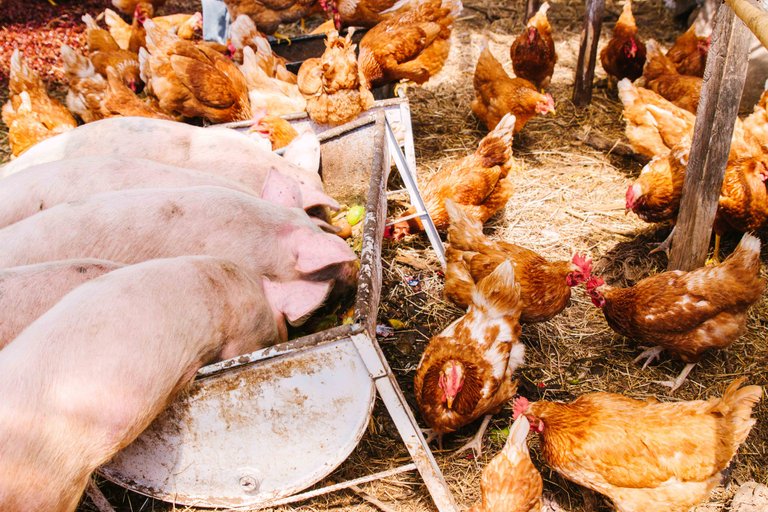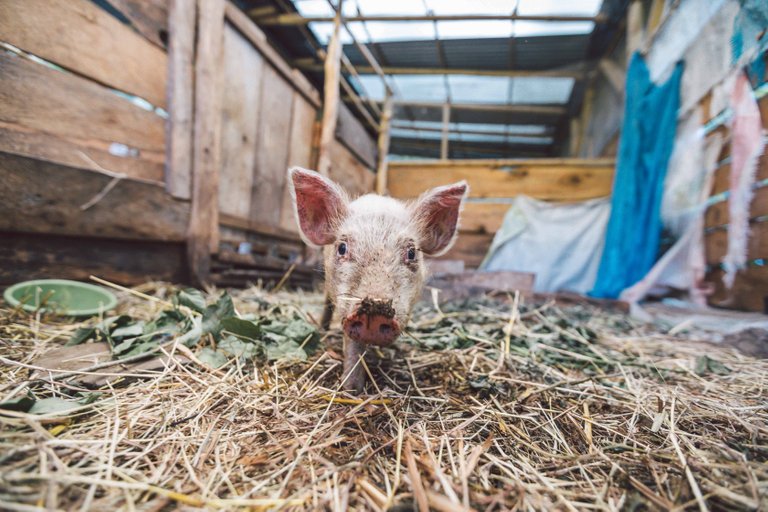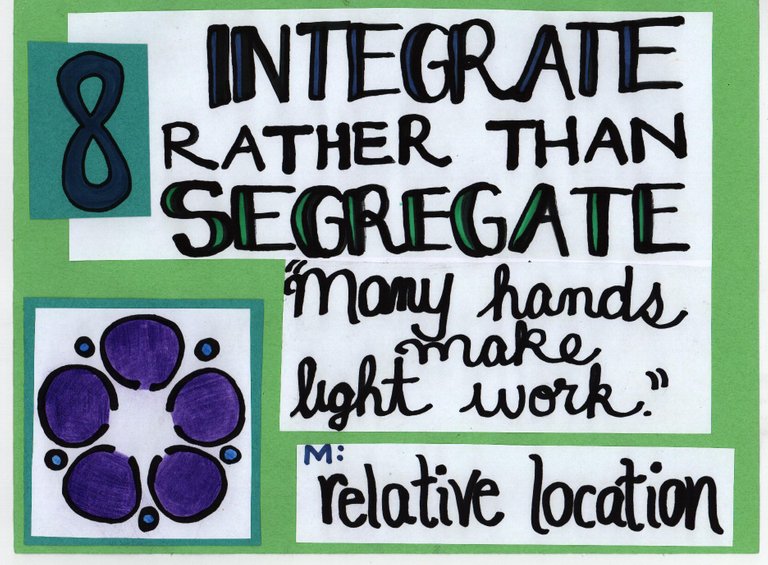Pigs in the Hen House?!?!
Greetings Steemians!
Finally getting more time freed up to post again. It has been a crazy couple of weeks for us, wrapping up some courses, putting out fires, and more. To start back up, I will continue with the Permaculture Principles.
Permaculture Principle #8 is Integrate Rather than Segregate.
I think one of the most important ideas that is alive in permaculture is the idea of functional inter-connectivity.
Permaculture is not about whether you have a food forest, a swale, an herb spiral, or a chicken run. Permaculture is about how the food forest relates to and interacts with the swale. Or how the herb spiral interacts with the chickens.
For me, permaculture is all about systems thinking. It is easy for us to see each element or 'thing' in our system as a stand alone object, existing by itself, amidst a bunch of other isolated items. This is taken to the extreme when places adopt permaculture and then say, "that field back there, that is our permaculture field." This basically misses the whole point.
We need to ask ourselves, "How can we integrate these two things?" "How can this work together with or support that?"
By forcing ourselves to think about integration, we begin to identify how one element, like the chickens, can support the other elements in our system.
Pigs in the Hen House!!??

Yeah, thats right! Pigs in our chicken house.
We manage a deep bedding indoor chicken house, where the hens live on top of at least 3 ft of composting bedding. This compost pile provides the hens with feed, medicine, and enjoyment, as they regularly turn the pile with great interest, looking bugs and seeds to eat. This alone is a great example of Integrate Rather than Segregate. Instead of mucking out the chicken coop and bringing the manure to a compost pile, why not just put the compost pile right inside the chicken coop. Duh!
But we wanted more!!! The pile wasnt getting turned as deeply as we liked. Sure we turn bits of it every day, when we care for the hens, but that means extra work for us, the lazy humans.
That is when we thought of the pigs. Pigs, those edible tractors that plough the earth for free and make bacon!
We decided to put some of our young pigs in the hen house. And wow! DId they get to work!!! They anxiously turned every bit of the compost, searching for food. In the process, they were also uncovering deeper layers to help the compost process and to give access to these deep layers to the hens that cannot reach them on their own.
Everything was great. Or so we thought...

After about 4 months, the pigs were quite large, and always hungry. One morning, I went in to do the morning chores in the hen house and I saw a bunch of feathers. Hmm...I didnt think much of it. The next morning, I saw loads more. That night I did a count (easier to count hens when they are roosting at night, than when they are all moving around. To y surprise, we had 6 fewer chickens than I remembered.
Then it hit me! The pigs had begun to eat the chickens!!! F**K ME!!! Naturally, we removed the pigs immediately. But man was I shocked. I had not expected that at all.
This does not mean it was a complete failure. In fact, quite the opposite. We learned in that moment that a 1-4 month old pig can happily co-exist with the hens, but a 5 month old pig will make the hens their dinner. Now we keep piglets in the hen house only at certain times a year, and are sure to move them out when they get big enough to worry about them eating their flatmate.
This is a good story because it illustrates the feedback loop in the design process. Try something, then accept feedback, modify, and try it again.
Can I integrate my hens into my garden. Perhaps. Maybe you put them in the garden in the middle of summer and they end up eating all of your tender young vegetables before they are ready to harvest. Not a great outcome. So modify. Can I integrate the hens into the garden at a different time of the year. Yes! You can put them out in the early spring before the plants are growing, to help fertilise and prepare the soil, and to break insect cycles. You can also add them in the fall, when the harvest is done, and they can do the same thing in preparation for winter. These details are what make the system work. You need to observe. Accept what the system is telling you, then modify and try again.
How do you integrate different elements in your homestead?
As always, this is original content. If you absolutely loved this post and are craving for more, consider following me. You wont be sorry :-)

We are on a small scale so we have chicken runs that we rotate between growing vegetables and running chickens. We also have a run with fruit trees and bushes that we have quail in. They keep the pests down and help themselves to low down fruit!
Awesome. We also use rotated yards for our meat chickens. I have never worked with Quail. Seems great though. Thanks for the comment!
Nice post! What wild and crazy pigs you have 🐷🐖🐽
Congratulations, Your Post Has Been Added To The Steemit Worldmap!
Author link: http://steemitworldmap.com?author=squdsi1Post link: http://steemitworldmap.com?post=permaculture-principle-8-integrate-rather-than-segregate
Want to have your post on the map too?
Hahahahaa! Well put! heheh,.
Thank you for the reminder of the interaction between elements making the system complex and rich!
How we are trained: We put one thing next to the other, make a little collection and proudly say look at all these marvellous things next to each other. We are basically trained to create dead systems.
In Permaculture we are aming for the highest level of interaction and therefore complexity. And so much of it that we are basically always scratching at the limit of chaos. Not quite entering chaos, as it might be destructive, but at maximum harmonic complexity. Thats the sweet spot for maximum abundant yield!
Good that your back @squdsi1. Missed your expertiese ;)